Kraków: A Journey Through Time
Join us on a free walking tour that uncovers Kraków's rich history, stunning architecture, and cultural vibrancy, all within the heart of this Polish gem.
Time
3 Hours
Stops
9 Places
Distance
3.5 km
Rynek Główny (Main Market Square)
As the largest medieval town square in Europe, Rynek Główny is the heart of Kraków and a perfect starting point to explore the city's rich history and vibrant culture.
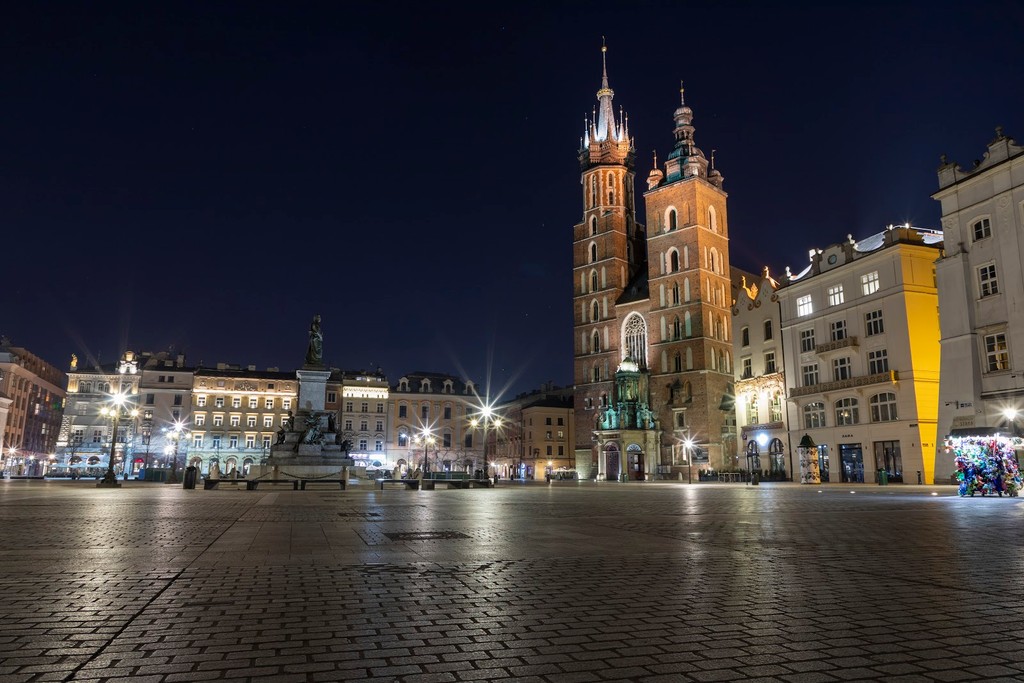
Rynek Główny (Main Market Square) (Source: Google Maps)
Rynek Główny, the Main Market Square, is the largest medieval town square in Europe and serves as the vibrant heart of Kraków. Established in the 13th century, this bustling square is surrounded by stunning historical buildings, including the Cloth Hall and St. Mary's Basilica. The square has played a pivotal role in the city’s history, hosting markets, events, and celebrations for centuries. Its cobblestone streets are lined with cafes, shops, and street performers, making it a lively gathering place for locals and visitors alike. The square's architecture features a blend of Gothic, Renaissance, and Baroque styles, showcasing Kraków's rich cultural heritage. A visit to Rynek Główny is essential for anyone looking to experience the essence of Kraków.
St. Mary's Basilica
Located on the eastern side of the Main Market Square, St. Mary's Basilica is renowned for its stunning Gothic architecture and the hourly trumpet call from its tallest tower.
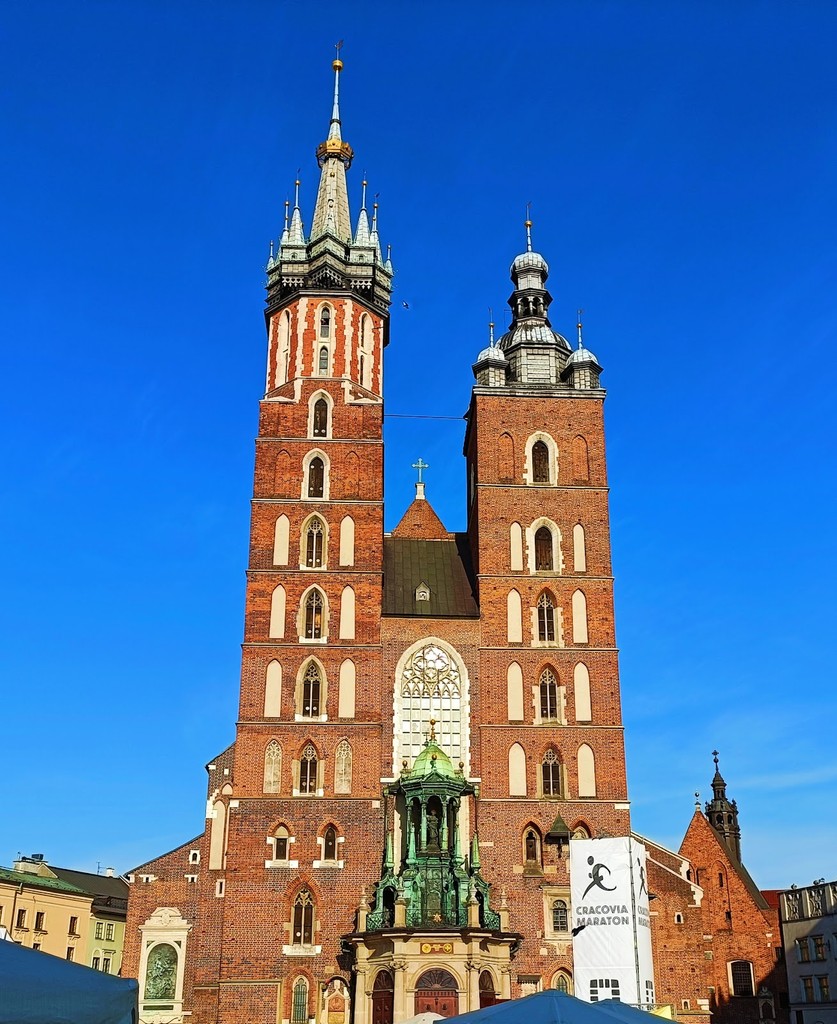
St. Mary's Basilica (Source: Google Maps)
St. Mary's Basilica, located on the eastern side of the Main Market Square, is an iconic symbol of Kraków, renowned for its stunning Gothic architecture. The basilica was built in the 14th century and features two distinct towers, the taller of which is home to the famous trumpet signal, known as the Hejnał, played every hour. Inside, visitors are greeted by an awe-inspiring altar crafted by Veit Stoss, a masterpiece of late Gothic art. The church is adorned with intricate stained glass windows and beautiful wooden sculptures, reflecting the craftsmanship of the time. St. Mary's Basilica has long been a center of worship and a gathering place for the community, embodying the spiritual and cultural life of the city.
Cloth Hall (Sukiennice)
Situated in the center of the Main Market Square, the Cloth Hall is a Renaissance-era trade hall that now hosts a lively market and art museum.
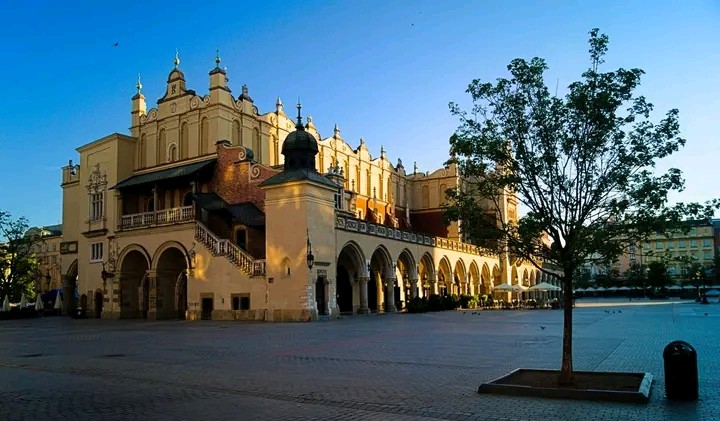
Cloth Hall (Sukiennice) (Source: Google Maps)
The Cloth Hall, or Sukiennice, is a Renaissance-era trade hall situated in the center of the Main Market Square. Originally established in the 14th century as a hub for cloth merchants, it has evolved into a vibrant marketplace and art museum. The hall's striking architecture features a series of arches and a grand central corridor, where visitors can explore stalls selling traditional crafts, souvenirs, and local artworks. Above the market, the upper floor houses the National Museum's gallery, showcasing an impressive collection of Polish art. The Cloth Hall is not only a testament to Kraków's historical trade significance but also a lively cultural venue, attracting both locals and tourists alike.
Jagiellonian University - Collegium Maius
As one of the oldest universities in the world, Collegium Maius offers a glimpse into Kraków's academic history and its beautiful medieval architecture.
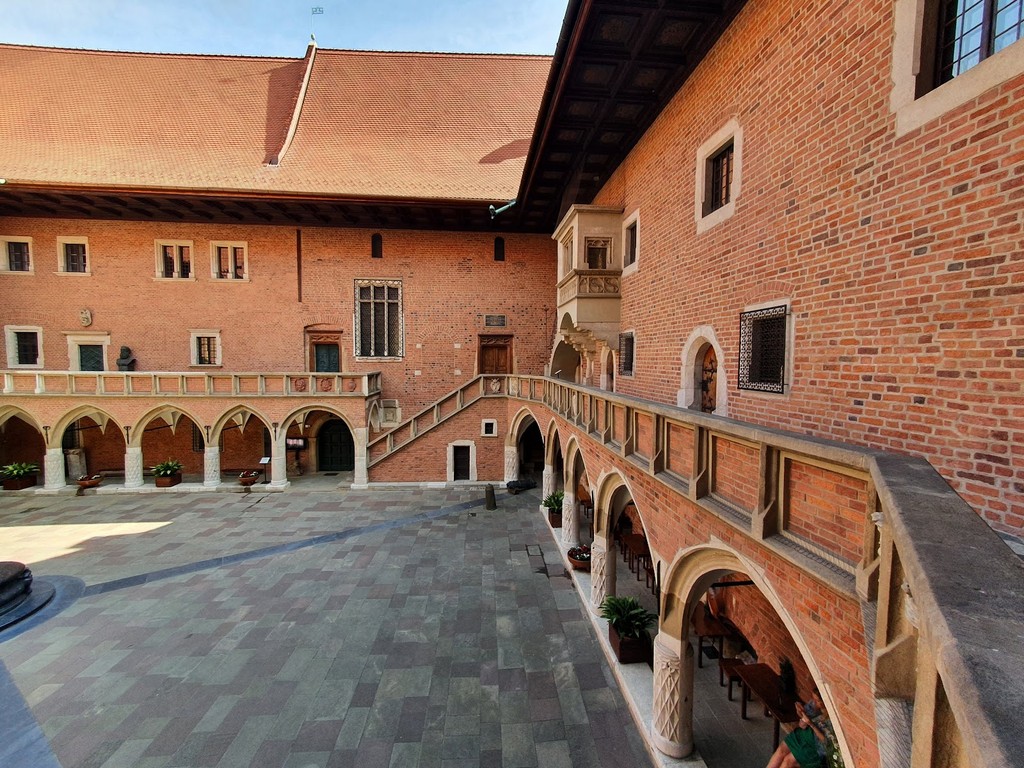
Jagiellonian University - Collegium Maius (Source: Google Maps)
Collegium Maius, the oldest building of the Jagiellonian University, is one of the oldest universities in the world, founded in 1364. This stunning medieval building is a marvel of Gothic architecture and has been meticulously preserved. The courtyard features a beautiful Renaissance arcaded gallery, while the interior houses a collection of historical artifacts, including the university’s ancient astronomical instruments. The university has a rich academic history, with notable alumni such as Nicolaus Copernicus and Pope John Paul II. Visiting Collegium Maius offers a fascinating glimpse into the scholarly traditions that have shaped not only Kraków but also the broader European intellectual landscape.
St. Francis of Assisi's Church and Monastery
This Gothic church is famous for its stunning Art Nouveau interiors and vibrant stained glass windows designed by Stanisław Wyspiański.
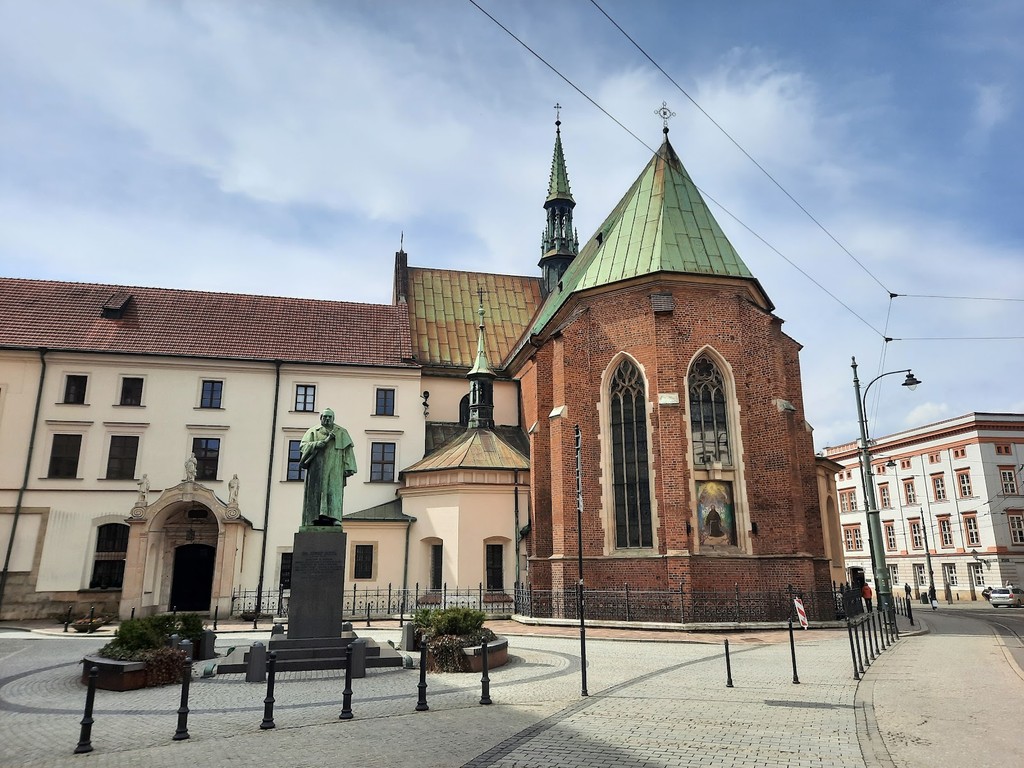
St. Francis of Assisi's Church and Monastery (Source: Google Maps)
St. Francis of Assisi's Church is a Gothic masterpiece famous for its stunning Art Nouveau interiors and vibrant stained glass windows, designed by renowned artist Stanisław Wyspiański. Built in the early 13th century, the church serves as a serene sanctuary amidst the bustling city. The interior is adorned with exquisite murals and intricate woodwork, creating a harmonious atmosphere for worship and reflection. The adjoining monastery has been a center for Franciscan spirituality and community life for centuries. This church not only reflects the artistic evolution of Kraków but also stands as a testament to the enduring legacy of Franciscan values in the city.
Wawel Castle
Situated on Wawel Hill, this historic castle complex is a symbol of Polish national identity and offers panoramic views of the Vistula River and the city.
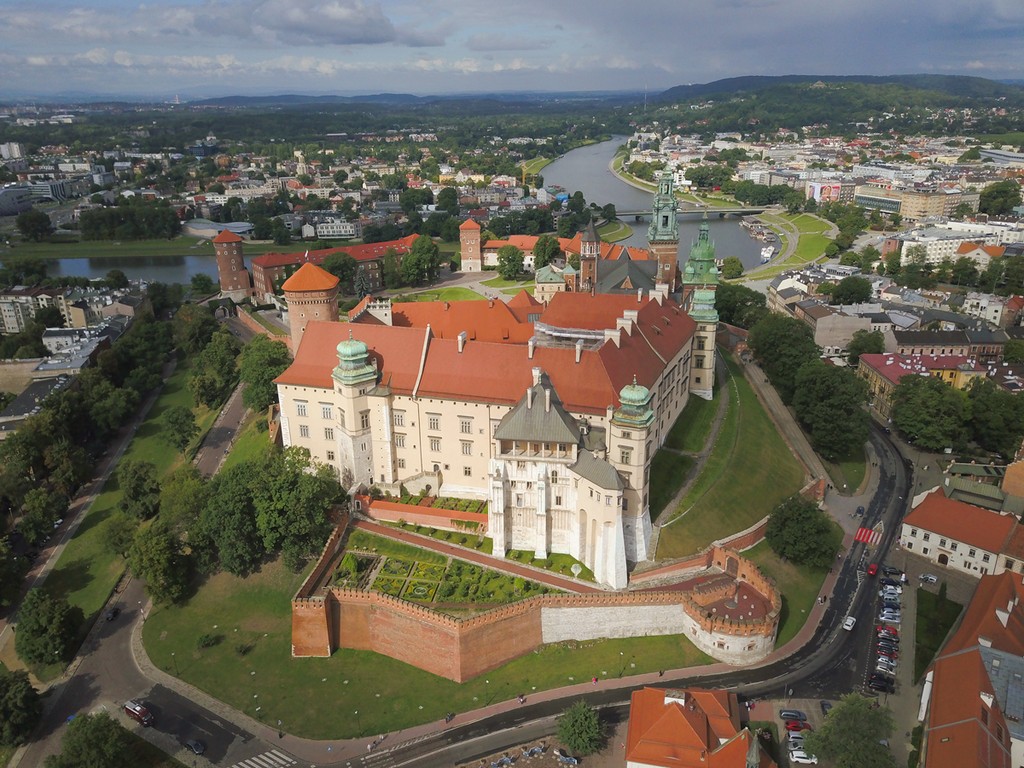
Wawel Castle (Source: Google Maps)
Wawel Castle, perched atop Wawel Hill, is a historic castle complex that symbolizes Polish national identity and heritage. Dating back to the 14th century, the castle served as the royal residence for Polish kings and is a stunning example of Renaissance architecture. The complex includes the impressive Royal Castle and the Wawel Cathedral, both rich in history and cultural significance. Visitors can explore beautifully decorated rooms, lush gardens, and the iconic Dragon's Den, which is steeped in legend. Wawel Castle has witnessed many pivotal moments in Polish history and continues to be a source of national pride, offering panoramic views of the picturesque Vistula River and the city of Kraków.
Wawel Cathedral
Adjacent to the Wawel Castle, the Wawel Cathedral is a spiritual sanctuary that has witnessed the coronations and burials of Polish monarchs.
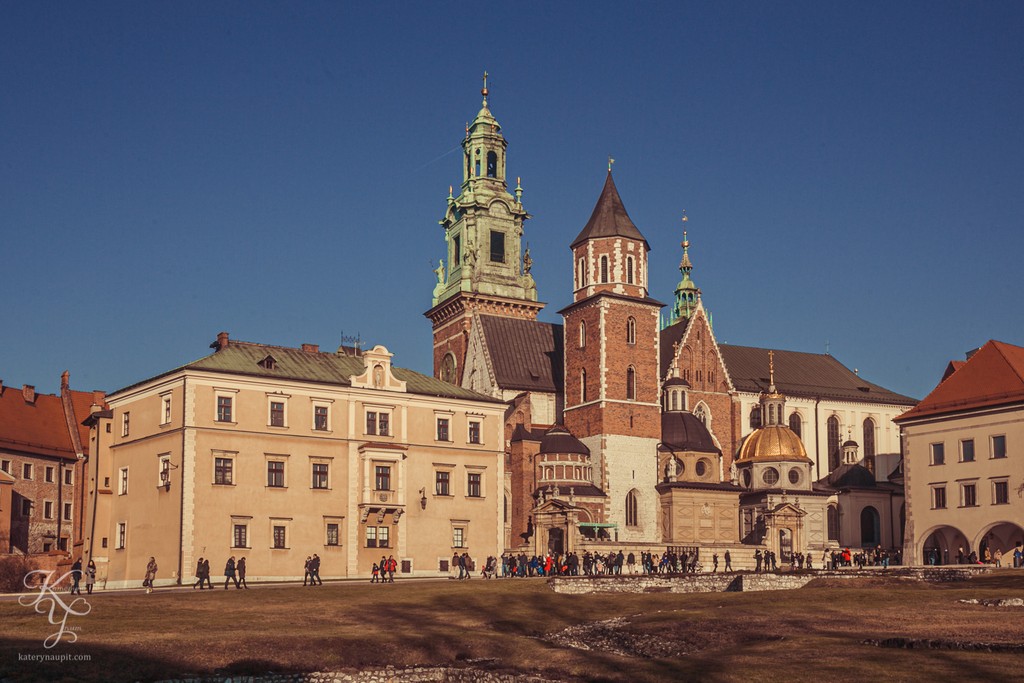
Wawel Cathedral (Source: Google Maps)
Adjacent to Wawel Castle, Wawel Cathedral is a spiritual sanctuary that has played a crucial role in Poland's history. This magnificent cathedral, originally built in the 11th century, has been the site of royal coronations and burials for centuries, making it a symbol of Polish statehood. The architecture is a blend of styles, including Romanesque and Gothic, featuring a stunning bell tower and intricate chapels. Notable among them is the Sigismund Chapel, adorned with lavish decorations and the tomb of King Sigismund III Vasa. The cathedral stands as a testament to the religious and cultural heritage of Poland, drawing visitors who seek to understand its profound historical significance.
Dragon's Den (Smocza Jama)
A legendary cave beneath Wawel Hill, Dragon's Den is shrouded in myths and offers a fascinating exploration of Kraków's folklore.
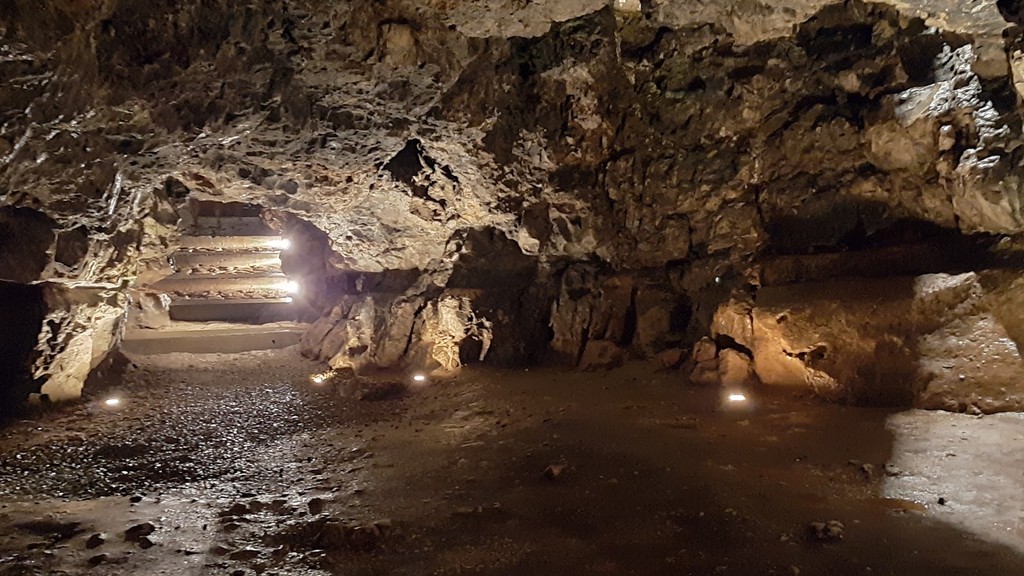
Dragon's Den (Smocza Jama) (Source: Google Maps)
Dragon's Den, or Smocza Jama, is a legendary cave located beneath Wawel Hill, steeped in myths and folklore. According to local legend, a fearsome dragon once inhabited this cave, terrorizing the city until it was outsmarted by a clever shoemaker. The cave itself is a fascinating geological formation, with stunning rock formations and a view of the Vistula River. Today, it serves as a popular tourist attraction, allowing visitors to explore its dark, mysterious depths while learning about the legends that surround it. The Dragon's Den not only highlights Kraków's rich folklore but also offers insight into the cultural narratives that have shaped the city's identity over the centuries.
Kazimierz District
Concluding the tour in Kazimierz, the historic Jewish quarter, allows you to immerse in its unique blend of cultures, vibrant street art, and rich history.
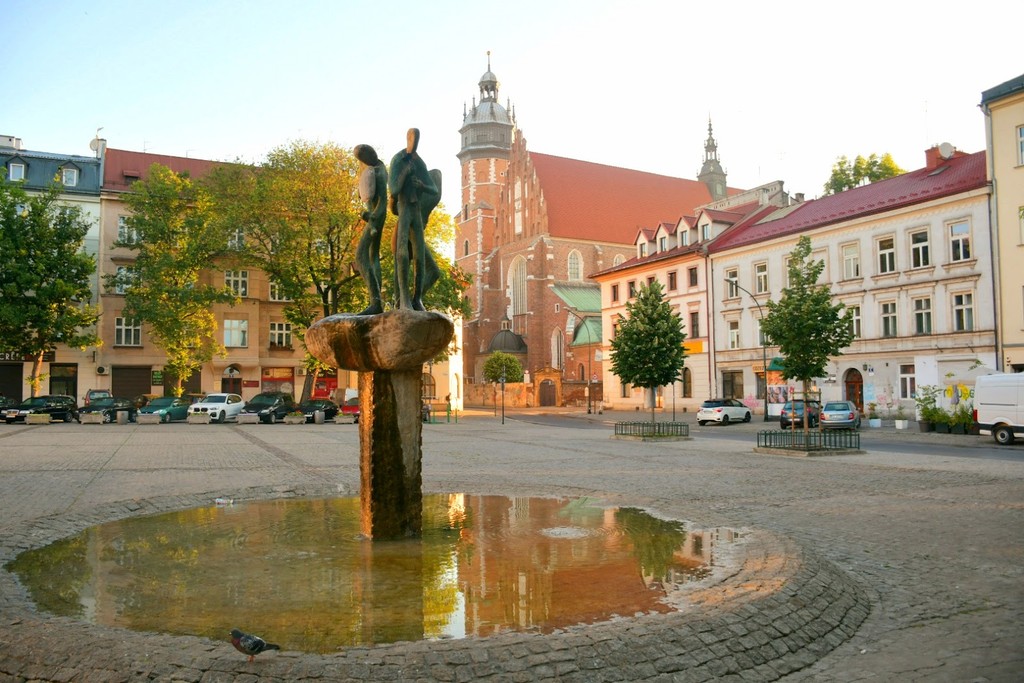
Kazimierz District (Source: Google Maps)
Kazimierz District, the historic Jewish quarter of Kraków, is a vibrant area that reflects the city’s rich cultural tapestry. Once a separate town, Kazimierz is now a hub of art, history, and community. The district is home to beautifully preserved synagogues, including the Old Synagogue, which is a museum today, and the Remuh Synagogue, known for its active congregation. The streets are adorned with vibrant street art, cafes, and galleries, showcasing contemporary Polish culture. Kazimierz has a rich history that includes the coexistence of Jewish and Christian communities, making it a significant site for understanding Kraków's diverse heritage. Exploring Kazimierz allows visitors to immerse themselves in its unique blend of cultures and historical narratives.

Your travels, your rules.
Create your own Free Walking Tours.
Set your preferences, distances and anything you want to do or see.
Completely free, no payment required.